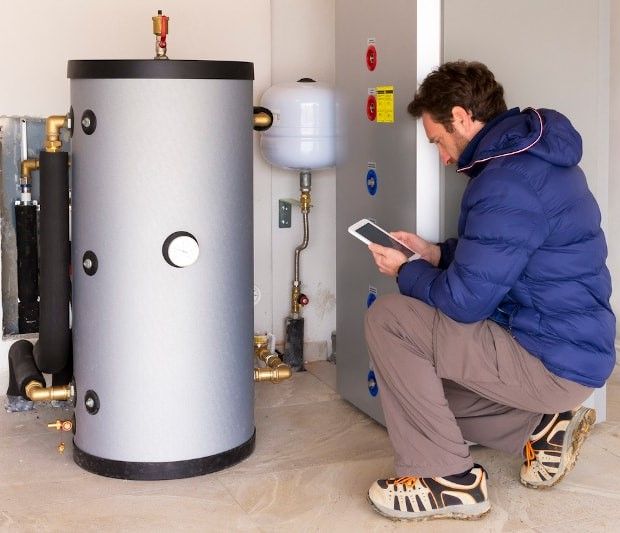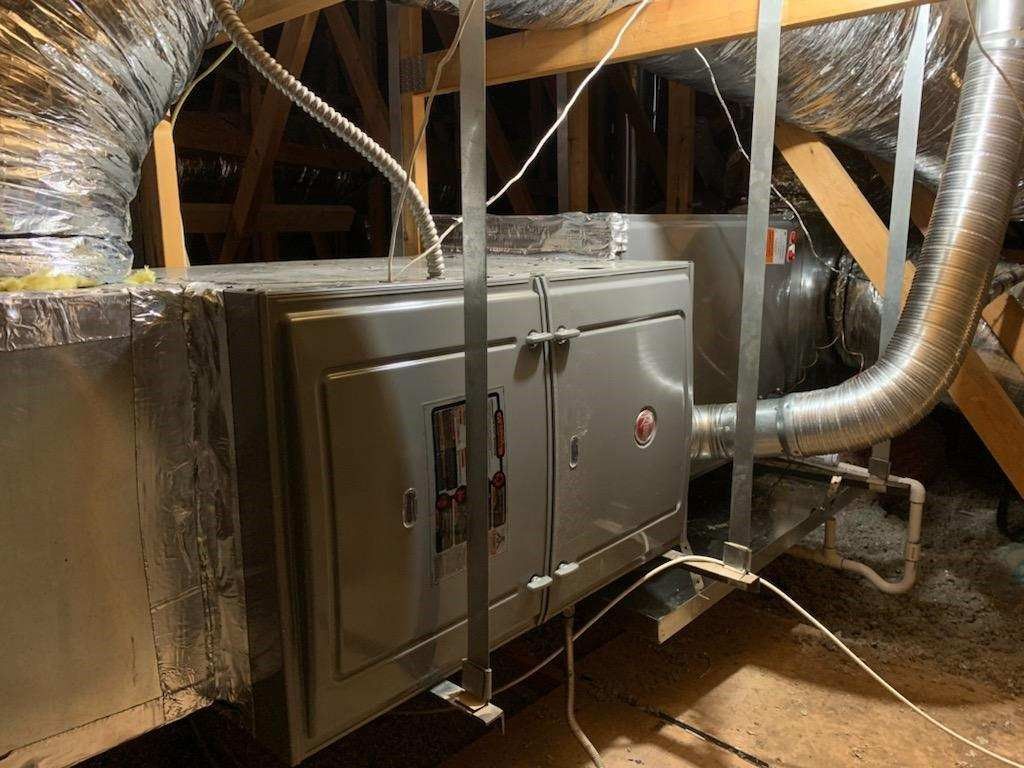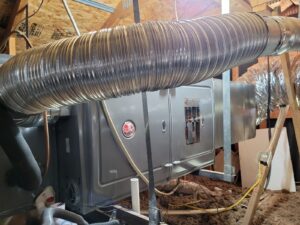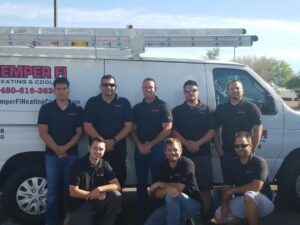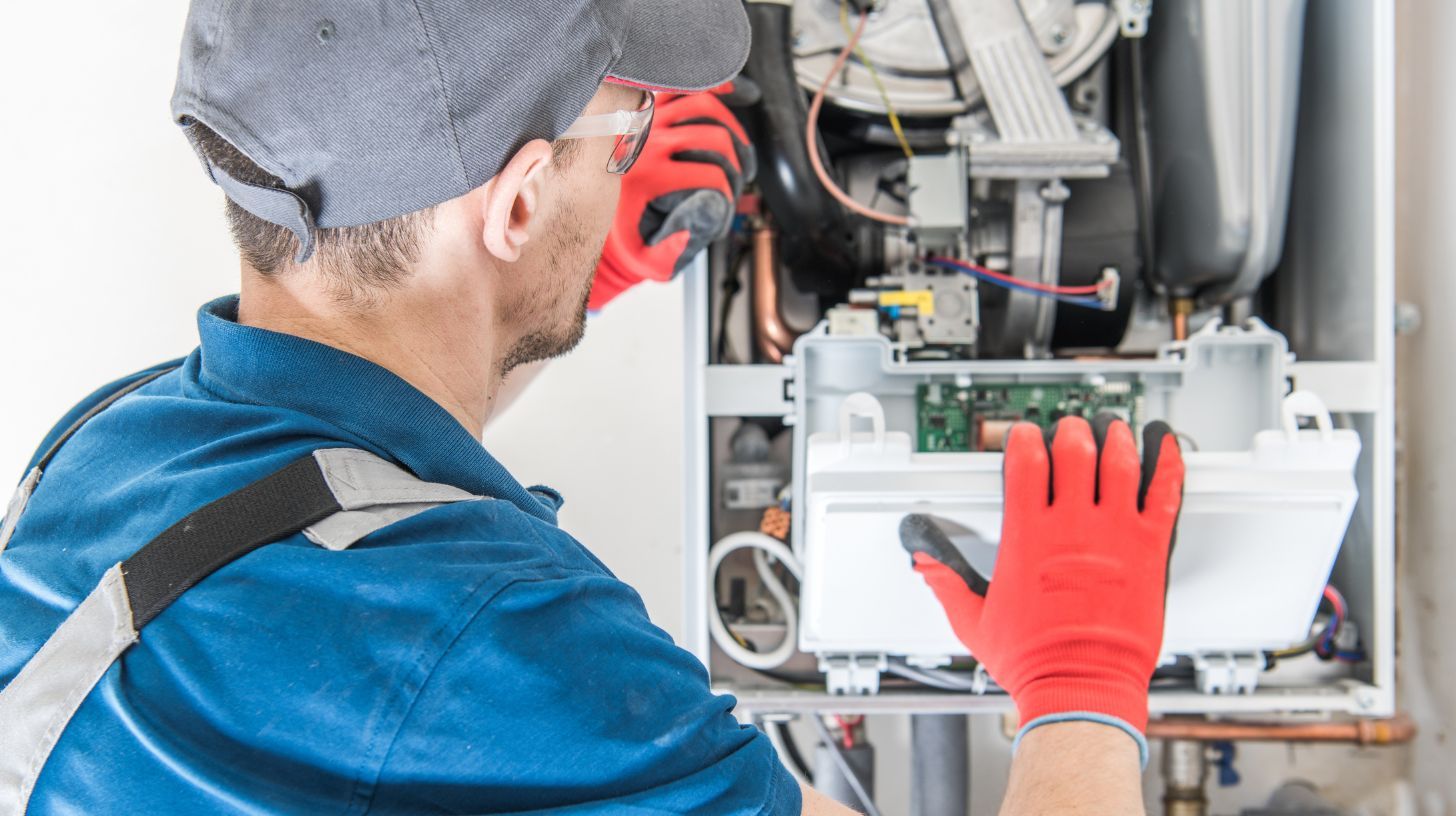6 Signs It’s Time to Replace or Repair Your Furnace
With winter just around the corner, temperatures are beginning to drop all around Mesa. Daytime temperatures are finally cooling off into the 70s and 80s, but this also means temperatures at night are getting much cooler. Some nights see temperatures dropping into the 40s, which can make sleeping more frigid for Phoenix residents.
When the weather starts to cool off, it’s good to check in on your home furnace. No one turns on their furnace when the temperature outside is pushing 100 degrees, so it sits idle for a few months. Before you boot it back up, this is a good time to make sure everything is working as it should.
Checking your furnace ensures it’s ready for the winter and not at risk of breaking. No one wants a broken furnace when the temperature outside is nearly freezing, so be proactive and check it in advance. When inspecting your furnace, look out for these signs that may indicate you need to repair or replace your furnace before winter arrives.
1. More Expensive Energy Bills
It’s normal for your energy bills to fluctuate a bit each month. Depending on how much energy you use, some months may cost less than others. For many Mesa homeowners, their energy bill increases in the summer as they run their air conditioning units.
When the temperature rises into the triple digits, it’s difficult not to use your air conditioner consistently. Typically, you should be able to explain the bill changes with your energy use habits.
However, an energy bill that goes up with no noticeable cause is a red flag. If you have your thermostat set to the same temperature you always do but your bill keeps increasing, this could be a sign of something wrong with your furnace.
Your furnace’s efficiency may be declining, requiring it to run more frequently to maintain home temperatures. A furnace that is no longer energy efficient will put more strain on your heating system, ultimately causing higher utility bills.
2. An Aging Furnace
A well-maintained furnace lasts for many years in Mesa, Arizona. While the exact lifespan of a furnace depends on the style and brand, a furnace can last an average of 15 to 20 years.
However, the older the furnace, the more likely it is to break or lose efficiency. It’s recommended to start keeping an eye out for a replacement furnace once your current one is over 10 years old.
This doesn’t mean you have to replace your furnace as soon as it turns 10. Make note of how often it breaks and needs repairs, and see if it would be more cost-effective to replace it. If repairs are costing you more than the price of a new furnace, it may be time to look for a furnace replacement.
To get the most out of your furnace and ensure it lasts 15 to 20 years, it’s important to stay up-to-date with routine maintenance and repairs. Even if you don’t think you need a maintenance service, they’re critical in keeping your furnace healthy and running smoothly.
Furnace maintenance twice a year catches minor issues early on before they become more serious problems, saving you money in the long run.
3. Strange Noises
When your furnace is running, you shouldn’t be able to hear anything other than a soft hum and the rush of air throughout the ducts. There shouldn’t be any noises when the furnace starts up, runs, or shuts off. If you start hearing loud noises such as pops, bangs, or clunks, this is a serious cause for concern. Not only are these sounds loud and alarming, but they could be a sign of something seriously wrong with your furnace.
The problem can range from a loose bolt to an issue with the ignition process. Over time, bolts and other parts of your furnace can become loose and start to clank around in your unit. This sounds alarming, but it’s a pretty easy fix. A furnace technician can come and tighten the part, or you can do it yourself if you find the culprit bolt.
Loud and sudden noises could also be a sign of a delay in the ignition process. If you have a gas furnace, gas could build up in the furnace before the ignition is triggered, leading to a loud bang noise when the furnace starts up. While this sounds scary, it is not an immediate safety concern. It needs to be taken care of by a furnace technician, but you’re not in any immediate danger.
4. Poor Air Flow
Your furnace is supposed to heat your entire home to a consistent temperature you set on your thermostat. The entire home should feel like it is the same temperature. If you walk around your home and find areas that are warmer or colder than others, this is a problem. This could mean there is poor airflow in your furnace or your HVAC vents.
The ducts and vents in your HVAC system take the warm air your furnace creates and distribute it throughout the home. If there is a blockage or hole in these ducts, warm air could be leaking out and causing hot or cold spots in your home. A technician can come out and diagnose the exact cause of a temperature fluctuation in your home.
Signs of poor airflow are easy to look out for. Is your living room colder than your bedroom when the furnace turns on? Then something is wrong with your furnace or HVAC ducts.
There shouldn’t be any temperature gradients in your home—every room should feel the same. While there may be a slight difference between the temperature of your basement and your attic, there shouldn’t be a shocking difference between rooms in your home.
5. Unusual Smells
Whether you have a gas or electric furnace, there shouldn’t be any smells coming from your unit. If you smell something funky or concerning coming from your furnace or HVAC ducts, it’s best to seek professional help as soon as possible. Unusual smells may not call for emergency services, but they need to be taken seriously and addressed before the system gives out entirely.
The most common cause of a furnace smell is a buildup of dust on the coils. When the furnace turns on, this dust burns and causes an unpleasant smell. This is not something to worry about, as it’s completely harmless.
If you have a gas furnace, a funny smell could mean a gas leak. Natural gas does not have a smell of its own, so how do you know if you have a gas leak? Many gas manufacturers add harmless odorants to their gas to give it a distinct smell. This way, you know when there’s a leak and when to call a professional. For example, if you smell rotten eggs, it may be a gas leak.
6. Frequent Cycling
A furnace is designed to keep a consistent temperature in your home. It does this by cycling on and off. When the temperature of your home gets too cold, the thermostat will tell the furnace to turn on and run a quick cycle. The furnace will then turn off once your home is back to the set temperature.
This cycle repeats itself around every 10 minutes, giving your furnace time to rest between cycles. If it feels like your furnace is running constantly or turning on and off frequently, it may be time for a heater repair.
Repeated furnace cycling could mean your furnace is losing efficiency and needs to run more frequently to maintain temperatures. This extra stress on your furnace also causes more wear and tear and breakdowns, costing you more money in the long run.
Contact Semper Fi for Furnace Repair & Replacement Services

Your furnace is what keeps your home nice and toasty when the desert winter nights start to creep in. You deserve the peace of mind that your furnace is running smoothly and ready to work all winter long.
If you’re looking for a heater replacement or repair in the Mesa, Arizona area, look no further than Semper Fi Heating & Cooling. We are a veteran-owned and operated company ready to serve our local community.
Our team understands the importance of hard work and service, which is why we pride ourselves on offering a 100% satisfaction guarantee for all of our furnace services. Our technicians are fully licensed and insured to work with all styles of furnaces.
